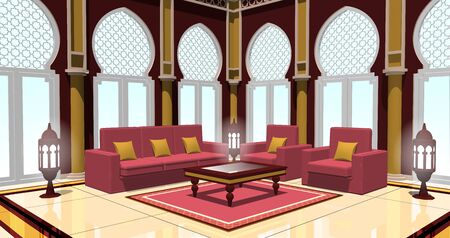Introduction: Embracing Online Design Solutions in British Homes
The way British families approach home design is changing rapidly, with virtual design consultations becoming a familiar part of daily life. As technology weaves its way into every corner of our homes, more people across the UK are turning to online platforms to seek expert advice and inspiration without ever leaving their front door. This shift reflects not only the convenience and flexibility that modern families need, but also a growing appreciation for tailored solutions that fit unique British lifestyles—whether it’s making the most of a compact Victorian terrace or transforming a countryside cottage to suit contemporary tastes. By embracing these digital services, households are finding new ways to express their individuality and bring fresh order to their living spaces, all while saving time and staying firmly rooted in the comfort of their own homes.
Understanding British Family Lifestyles and Household Dynamics
When it comes to virtual design consultations, truly understanding the nuances of British family life is essential for creating tailored solutions that genuinely fit. Unlike the one-size-fits-all approach, British homes reflect a tapestry of traditions, priorities, and practicalities shaped by both heritage and modern needs. Let’s delve into some defining features of UK households that shape their design requirements.
Multigenerational Living: A Growing Trend
Many British families are embracing multigenerational living, where grandparents, parents, and children share a single home. This shift often stems from rising property prices and a strong sense of familial support. Design consultants must consider privacy for all ages, accessibility for elderly relatives, and flexible spaces that can adapt to changing family structures.
Pet-Friendly Spaces: Four-Legged Family Members Matter
The British love their pets—dogs and cats are often treated as full-fledged family members. Virtual design must account for pet-friendly fabrics, durable flooring, built-in feeding stations, and clever storage for leads or toys. Every solution needs to balance style with practicality for muddy paws and playful kittens.
The Importance of Communal Areas
The heart of the British home is communal living—think cosy lounges for tea and telly, open-plan kitchens where everyone gathers around the table, or gardens designed for summer barbecues. The emphasis is on togetherness while still preserving personal space when needed. Virtual consultations should help families articulate how they use these shared zones, ensuring each area serves multiple purposes without feeling cluttered.
Key Features in British Homes
| Feature | Description | Design Considerations |
|---|---|---|
| Multigenerational Living | Multiple generations under one roof | Zoned layouts, soundproofing, adaptable rooms |
| Pet-Friendly Design | Accommodating dogs, cats, etc. | Easy-clean materials, hidden storage, integrated pet areas |
| Communal Spaces | Kitchens/lounges/gardens for gatherings | Flexible furniture, open plans, smart organisation solutions |
A Day in a British Home: Practical Realities Meet Tradition
A typical day might start with a bustling kitchen breakfast, followed by separate routines (work calls in a tucked-away study nook or school runs), but always circles back to shared dinners or weekend catch-ups in the garden. Virtual design consultations succeed when they listen closely to these daily rhythms and propose solutions—like extendable tables or multipurpose alcoves—that make life easier and more enjoyable without sacrificing that cherished sense of home.

3. Virtual Consultations: Bridging the Gap Between Designer and Homeowner
The rise of virtual design consultations has transformed the way British families connect with interior designers, creating a seamless bridge between expertise and home comfort. Thanks to advanced online tools—think video calls, real-time screen sharing, and digital mood boards—homeowners can now engage in personalised, face-to-face conversations with professional designers without ever leaving their living rooms. This approach not only saves time but also encourages authentic communication, allowing both parties to walk through the property together, virtually, discussing every nook and cranny in detail.
What makes this shift particularly suited to the UK is its diverse housing landscape. From charming Victorian terraces lined up in leafy suburbs to sleek new builds tucked away in bustling city centres, British homes are as varied as the families who live in them. Virtual consultations offer tailored solutions that respect the unique character of each property type. Designers can easily adapt their advice for period features such as ornate fireplaces or sash windows, just as readily as they can recommend clever storage for compact new-build flats or open-plan layouts in modern estates.
These interactive sessions foster a sense of partnership and practicality—a very British sensibility. The ease of sharing photographs, floorplans, or even video tours means that specific concerns (like maximising under-stair storage in a terraced house or selecting space-saving furniture for a small city flat) can be addressed on the spot. By blending technology with personal touch, virtual consultations ensure that every family’s needs are heard and solutions are crafted with their lifestyle firmly in mind.
Designing for Real British Spaces: Practical Solutions Online
One of the standout benefits of virtual design consultations is the ability to address the unique challenges of British homes, especially when it comes to making the most of every inch. Many UK properties, whether Victorian terraces or contemporary flats, come with spatial quirks—awkward corners, narrow hallways, or compact living rooms. Through online consultations, designers can offer tailored advice that suits the authentic rhythms of family life in Britain, all without stepping foot through your door.
Maximising Limited Space
British families are experts at adapting to less-than-generous floorplans. Virtual design sessions focus on using smart furniture choices and multi-purpose zones to make small spaces feel open and functional. For example, a bay window might become a cosy reading nook by day and a homework station by evening. Designers recommend fold-away desks or nesting tables that tuck neatly away when not in use—ideal for living rooms that double as playrooms or workspaces.
Clever Storage Solutions
Clutter is the enemy of calm, especially in busy family homes. Professional designers use video walkthroughs to spot underutilised areas—think understairs alcoves or high ceilings ripe for shelving. Below is a quick reference table with storage ideas commonly suggested during virtual consultations:
| Area | Solution | Benefit |
|---|---|---|
| Hallway | Slim shoe cabinets & wall hooks | Keeps entry tidy; saves floor space |
| Living Room | Ottoman with storage & floating shelves | Doubles as seating; displays books & toys |
| Bedroom | Beds with drawers; built-in wardrobes | Hidden storage; maximises vertical space |
| Kitchen | Pulldown racks; magnetic spice strips | Makes use of walls; keeps counters clear |
Adapting Layouts for Everyday Living
Virtual designers help families reimagine layouts to suit daily routines. In many British homes, open-plan isn’t always possible—but zoning can be achieved with rugs, lighting, or modular furniture. During consultations, designers often suggest subtle room dividers like bookcases or folding screens to create separation between dining and lounging areas without major renovations. By focusing on flow and flexibility, online experts ensure that each family member has a functional space for relaxing, working, or gathering together—even within modest square footage.
The British Approach: Style Meets Functionality
The hallmark of successful virtual design for UK homes is balancing traditional charm with modern practicality. Whether it’s preserving period features while upgrading storage, or integrating tech-friendly nooks into older layouts, these online solutions are rooted in everyday realities—making life not just more beautiful, but more organised too.
5. Incorporating British Cultural Elements and Local Design Trends
One of the most engaging aspects of virtual design consultations for British families is the ability to infuse interiors with unmistakably local character. Online consultations provide a platform for designers and homeowners to collaborate in real time, ensuring that every recommendation feels authentic to Britain’s diverse tastes and traditions. Whether you’re drawn to classic heritage motifs—such as William Morris prints, tartan patterns, or vintage-inspired wallpapers—or prefer sleek contemporary influences inspired by urban London apartments, virtual design allows these elements to be seamlessly woven into your home environment.
Embracing Heritage Motifs
Many British families value a sense of continuity and tradition in their living spaces. During online consultations, designers often suggest ways to incorporate iconic materials like exposed brickwork, weathered timber, or brass fittings. These choices not only reflect a timeless aesthetic but also tell a story rooted in British history. Designers may recommend displaying family heirlooms or antique finds as focal points, blending personal narrative with national identity in a way that feels both nostalgic and fresh.
Adapting Contemporary Influences
British design isn’t just about looking back; it’s also about adapting to the present. Virtual consultations frequently highlight current trends such as muted colour palettes influenced by the ever-changing UK skies, minimalist furnishings that suit smaller city flats, or sustainable materials in response to growing eco-consciousness. Designers guide families in selecting modern British brands and artisans whose work reflects this forward-thinking approach, ensuring homes are stylish yet practical for everyday life.
Translating Trends through Technology
The beauty of online consultations lies in their flexibility and creativity. Designers can share mood boards, 3D room plans, or interactive product samples tailored specifically to British lifestyles—whether that means maximising natural light during grey winters or carving out cosy reading nooks perfect for rainy afternoons. By interpreting local trends digitally, families receive personalised advice that resonates with how they truly live, making each space uniquely theirs while celebrating what makes British homes special.
Sustainability and Family-Friendly Design: Balancing Beauty and Function
For British families, balancing sustainability with daily practicality is an essential part of modern home design. Virtual design consultations have adapted to these needs by prioritising eco-friendly materials and low-maintenance solutions that fit seamlessly into the ebb and flow of family life across the UK.
Through online sessions, designers can take a deep dive into each familys lifestyle: Are there muddy boots at the door after a long countryside walk? Do pets or little ones add joyful chaos to the living room? By listening to these details, virtual consultants recommend finishes and furnishings that stand up to daily wear while keeping environmental impact front of mind.
Popular suggestions often include hardwearing, sustainably sourced flooring such as bamboo or FSC-certified wood, which is not only kinder to the planet but also easy to clean—perfect for busy households. For upholstery and soft furnishings, designers guide families towards fabrics made from recycled fibres or organic cotton, ensuring that style doesn’t come at the expense of durability or ecological responsibility.
Low-maintenance choices are equally championed in virtual consultations. Wipeable paints, stain-resistant rugs, and modular storage systems are all staples in recommendations for British homes. These elements make it easier to keep spaces tidy and stress-free, encouraging even children to get involved in daily tidying routines—a nod to both practical family life and the British love for orderliness.
Moreover, digital platforms allow families to visualise how sustainable options will look in their actual rooms before making any commitments. This not only reduces waste but also makes the process more interactive and reassuring for parents keen on making thoughtful investments.
The result is a home that embodies both contemporary British values—respect for tradition, resourcefulness, and care for the environment—while meeting the unpredictable demands of family living. Virtual design services help ensure that beauty never comes at the cost of function or sustainability, reflecting a uniquely British approach to home life.
7. Conclusion: The Ongoing Evolution of Design Services in Britain
As we look ahead, it’s clear that virtual design consultations are not just a passing trend but a transformative force reshaping how British families create homes that suit their evolving lifestyles. The British household, with its unique blend of tradition and modernity, continues to adapt—balancing heritage with innovation, family routines with flexibility. Virtual consultations have become an essential tool in this journey, offering tailored advice without geographical limitations and enabling families to access expert guidance at their own pace.
This digital approach aligns perfectly with the British emphasis on practicality, privacy, and bespoke solutions. Whether it’s reimagining a Victorian terrace for multi-generational living or optimising new-build flats for hybrid working, online design services offer flexibility and personalisation that fit seamlessly into everyday life. As technology advances—from immersive 3D walkthroughs to AI-driven room planners—these services will only become more intuitive and responsive to the needs of busy families.
Importantly, virtual consultations also support sustainability goals by reducing unnecessary travel and helping households make thoughtful decisions about furniture, storage, and layout. They empower people to experiment with ideas before making costly commitments—something particularly valued in the careful budgeting culture seen across many UK homes.
The future promises even greater integration of virtual design into daily life, with more collaborative platforms and smarter tools tailored to specific British needs, from clever under-stair storage to adaptable open-plan living spaces. As our homes continue to reflect our changing aspirations—be it for comfort, organisation, or connection—virtual design consultations will remain a trusted companion, guiding us through every stage of family life with both expertise and empathy.


